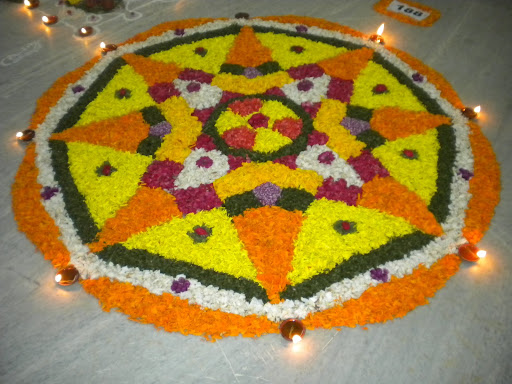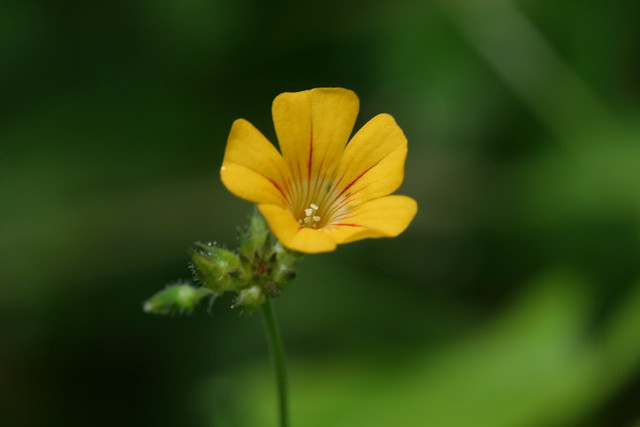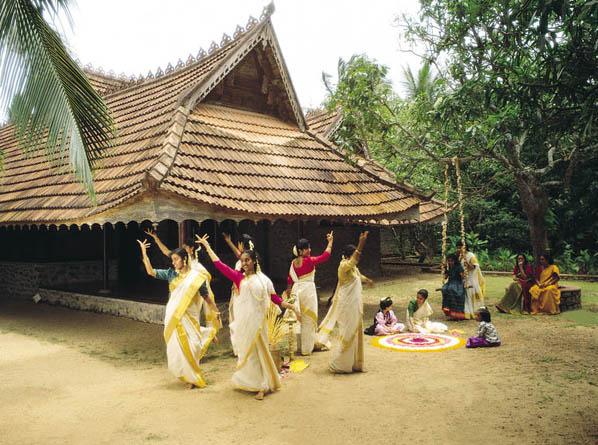When we think about Onam, one of the first images that comes to mind is that of the traditional flower bed or floral (designs) arrangement known as Pookkalam or Athapookalam. It is a distant cousin of Rangoli in North India and Kolam in Tamil Nadu.

Traditional Pookalam pattern are created in ten rings, which stand for the ten days advance of the festival. Today's Pookalam Designs have grown from this traditional shape into square, oval and other geometrical patterns. These designs are an ethnic highlight of the Onam festival. The beauty of vibrant floral designs are exposed in inventive, imaginative form. It is a remarkable work of art accomplished with an overcautious touch and a highly desirable sense of character and blend.
.jpg) |
| Thulasi |
 |
| Thumba |
The pookalam is traditionally circular in shape and about four to five metres across. The outline or kalam is drawn using white clay or dough. Starting from the Atham day, every day a ring of flowers and leaves is added to the pookalam making it grow in size till it reaches its final shape on Thiruvonam day. Each day of the 10-day Onam festival is represented on the Pookalam. On the Atham day, there will only be a single ring, the next day which is Chithira there will be two rings and finally on the Thiruonam day there will be 10 rings. On the first day only a single color flower is used, second day two colors and on the final day 10 different colors of flower is used.
Symbolically the ten rings or steps represent the ten deities in the Hindu pantheon. First step is Ganesha, second is Shiva and Shakti, third is Shiva, fourth is Brahma, fifth is Pancha Boothangal, sixth is for Shanmughan or Muruga, seventh step is for Guru, eighth step is for ashta digpalakar, ninth is for Indra and tenth is for Lord Vishnu. At the center of the floral decoration, the clay idol of Vamana, known as Thrikkakkarayappan, is placed. There is also a belief that the floral carpet symbolically represents the fight between Asuras (demons) and Devas (Demi gods).
 |
| Konginipoo |
 |
| Mukkutti |
Onam comes in August-September in Kerala which is the spring season. Nature is in full bloom and the women and children find no shortage of flowers for the Athappoo. Thumba, Thulasi, Kadali, Mukkutti, Chethi, Shankupushpam, Manthaaram, Konginipoo, Jemanthi and Chembarathi are some of the main flowers used. A flower is dedicated to each day of Onam and dominates the decorations of that day.
While the boys compete to gather flowers of varying colours, young ladies, assisted by children make the floral decoration every morning. Girls in a neighborhood join together and taking turns, perform the "poovideel" (ritual for flower offerings) before sunrise at the pookkalam, with accompanying songs, during all ten days.

Now the Pookalam designs have gone beyond tradition and comes in all shapes and sizes. Many pookkalams concentrate more on the design part and in the process the ten rings are avoided. Today, the tradition is rarely followed and importance is given to design. People even use Rangoli and artificial colors to make Pookalam. Some make pooklam on concrete floors and indoors for lack of space. Even ready-made pookalams are available. But Onam still brings back good memories of childhood with prosperity and warmth togetherness.

We wish everyone a Happy and Prosperous Onam :)





0 Feedbacks: